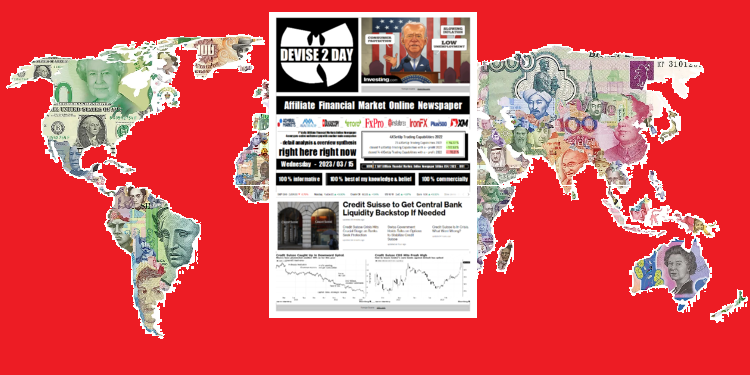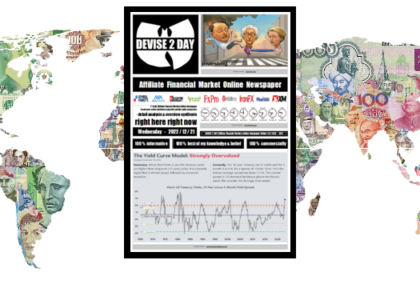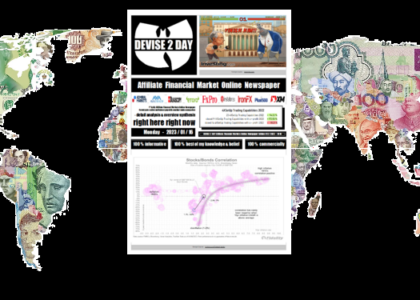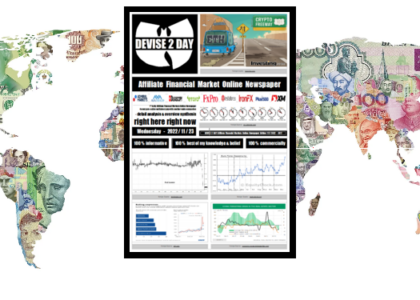
2023/03/15 (191.054) Technical Analysis – … & CME-BTC1!
The 1st Battle For Us Bulls In BITCOIN At 20000 Has Been Won
– In Order To Win In Long-Term, 30000 Must Be Reconquered Medium-Term
Joseph Stiglitz is considered one of the most renowned economists of our time.
The economist, who is also valued by me, is politically classified on the semi-left flank; from me too. Nevertheless, as with most economists, there are always a few aspects in his case that can be accepted as right – and not wrong, because he feels he belongs to a different political current. I like Stiglitz because he doesn’t beat around the bush, as we say here in Germany. The outspoken Nobel laureate’s views carry weight – mostly by the US Democrats. His comments on the Fed’s monetary policy at the beginning of 2023 are likely to be of great interest to us financial market participants.
For almost a year, the Fed has reacted to persistently high inflation rates with offensive interest rate hikes.
During this period, the US interest rate rose from zero to over four percent. Many other central banks such as the ECB, the Bank of England and the Swiss National Bank (SNB) followed suit and gave up their low interest rate policy. Even the Bank of Japan (BoJ), which has been seen as particularly dovish in recent years, has taken tentative steps towards tightening. Economics Nobel Prize winner Joseph Stiglitz, who served as chief economist at the World Bank between 1997 and 2000, considers the restrictive monetary policy to be a mistake with serious consequences. I don’t – to make it clear upfront. And with all love and respect. Because when I read, hear and/or see something by Stiglitz, I always deal with it – and form my own opinion. Whatever you should do.
In an article published in the British daily newspaper “The Guardian” at the end of January,
Joseph Stiglitz criticized the current monetary policy of the US Federal Reserve with harsh words.
In his opinion, the Fed’s interest rate rate is based on incorrect assumptions. The US Federal Reserve incorrectly thought that too much demand from consumers and companies met too little supply of goods, which caused prices to develop upwards. Interest rate increases were therefore necessary to reduce the demand for goods and services. The US economy will also have to put up with a recession, as Fed Chairman Jerome Powell emphasized several times in widely acclaimed speeches. A declining demand situation is therefore essential for restoring long-term price stability, especially since otherwise there is a risk of a wage-price spiral. However, Stiglitz has a very different opinion on how inflation came about. “There is overwhelming evidence that the main cause of inflation was pandemic-related supply shocks and shifts in the demand structure, not excess aggregate demand, much less additional demand created by pandemic spending,” the Nobel laureate said. Therefore, interest rate hikes were not necessary: “Anyone who has a little faith in the market economy knew that the supply problems would eventually be solved; but nobody could know when.” I disagree with him on this – 100% diametrically! Because he argues like an expansive fiscal policy dove from the Corona period. And in retrospect he also blames the restrictive, hawkish FED policy. And what is the FED doing? In the person of your Chairman Powell, he is too much diplomatic in public to react to such criticism. And always refers to his mandate of inflation and unemployment.
Don`t understand me wrong – or suggest a conflict between me and Stiglotz.
I simply prefer a basically an hawkish policy. So don`t understand me wrong! It`s not about who`s right! It`s all about which us fiscal policay and/or monetary policy have a majority. And I just can’t help myself zo resolve the us economy without the picture of Biden’s Cain economic policies. Because his green opposite economic policy was and is responsible for today`s us economic scenario. Just look at US inflation during Donald Trump’s time – and the rise since Biden had the final say in the White House. But at least the pressure for a higher oil price, since the beginning of this week, should be tacitly gone, if I’m not mistaken. And that regardless of the demand from China, let alone Russia’s war of aggression. Because Theran and/or Ryal seem to agree peacefully – and that thanks the help of the Chinese and not US Americans. That`s why we remain short in the oil price. But that’s just by the way.
Stiglitz is considered a neo-Keynesian economist
who generally advocates low interest rates and financial generosity on the part of the state.
What the US inflation demands, yes even conjures up, is the logical consequence if US production, i.e. the supply of goods and services, namely material goods and non-material service offers, is not at least as high. Because when US inflation overruns US GDP in the truest sense of the word, then we will all experience what we are experiencing together in the USA; namely an US stagflation. Hardly anyone talks about it in public – except for Nourinel Roubini. In this sense, Stiglitz calls for a generally low level of interest rates and government stimulus packages. On the other hand, there are some economists who think the Fed’s interest rate policy doesn’t go far enough. For example, the “Black Swan” author Nassim Taleb accuses the Fed, ECB & Co. of having created “malignant tumors like Bitcoin with their ultra-liquid monetary policy in recent years.“ Therefore, all central banks urgently need to return to an interest rate of four to five percent as quickly as possible and maintain this higher level. This is the only way that future stock market excesses can be avoided and investors’ investments can once again achieve greater economic benefits. “Dr. Doom” Nouriel Roubini is a notorious critic of the Fed’s interest rate policy, which he sees as a major reason for the escalating debts of states and “zombie companies”. A less liquid monetary policy is not only necessary to reduce inflation, but also to tame the ominous speculation frenzy of many investors. I agree. But roday 2023 we currently have several generations of financial market participants who only know US inflation from books. As well as a generation that only knows low interest rates. And that`s why I assume that we will deal with us inflation, even us staglation, longer as we would like. And I let myself be persuaded to formulate a BITCOIN long 4XSetUp. How exactly? That every day this week in the Technical Analysis 4XSetUps…+14% In 7 Days! BTC Is Exploding
– But Are The Bulls Taking Over The Price Action?
After an explosive rally, Bitcoin is currently gearing up for the next move. Can the bulls push the asset higher in the near future – or will the crypto currency have to give up its recent gains again? Forecasts are currently more than confident – but rightly so? Take care, i don`t trust this 4XSetUp. But we stay long…
From bearish to bullish, overnight: As is so often the case, a change of direction is occupying the volatile crypto markets.
In view of the smoldering US banking crisis (Silicon Valley Bank, Silvergate, Signature), forecasts had promised an intensive decline in Bitcoin, Ethereum and Co. – however, the opposite has now happened. The digital assets have been able to recover spectacularly within the last 48 hours, even climbing new highs for the year – above all, of course, Bitcoin, the most valuable cryptocurrency by market capitalization. Bulls propelled BTC from the weekly low of $21,949 to $24,459 first, then as high as $26,514 in a subsequent leg (Coinmarketcap.com data). A partial victory, because: The coin last saw this price region in June 2022 – but at the time it was on the way down. Now BTC is pushing up – towards new price records. Altcoins are also showing strength, such as Ethereum (ETH): the smart contract platform was able to temporarily move to $1,778, securing weekly gains of more than 12%. Bitterly, however, the reversal was preceded by a massive sell-off – crypto investment products saw outflows of a record-breaking $255 million, according to CoinShares, Europe’s largest digital asset manager. Many probably got out early in anticipation of an intensive correction – only to miss the brilliant upward movement that followed. But how sustainable is the rally really? That remains to be seen. Currently trading at $24,663, traders and analysts are keeping an eye on the price in anticipation of the next move. If the bulls take over now, a jump towards $30,000 is likely. Failing that, the bearish momentum could take a hit – and trigger a new decline.
The development of bitcoin in recent years
The development of Bitcoin has been very changeable in recent years. But that’s not a big surprise either, because cryptocurrencies are generally considered to be very volatile. For this reason, it is also normal for Bitcoin that there are always massive fluctuations and there are also massive price slumps around the BTC from time to time. If you look at the beginning of October 2020, you can see that Bitcoin was less than $11,000 at that time. The price of bitcoin then rose rapidly and in January 2021 the price of BTC was more than 40,000 US dollars. But only a short time later, the price slipped to around $30,000. Incidentally, Bitcoin had its highest price so far in November 2021 with a value of around 68,000 US dollars for one BTC. A complicated mood prevailed in various financial markets last year and for this reason it was not a big surprise that Bitcoin came under significant pressure overall in 2022. Nevertheless, it could be observed again and again in the past year that BTC was always able to pull itself together, even if only at a low level.
Bitcoin appears to be rallying in 2023
After a difficult year in 2022, Bitcoin seems to be doing better again this year. At least BTC was able to recover a little in the first few months of this year and Bitcoin has currently reached a price of over 24,000 US dollars again. However, the forecasts for the further development of Bitcoin are very different. There are some experts who expect another rapid increase for the BTC in the course of this year. On the other hand, there are a number of experts who expect the Bitcoin environment to remain difficult in 2023. However, the course development for Bitcoin cannot be reliably predicted anyway due to its enormous volatility.
Bitcoin before technical breakout
After a correction phase lasting more than two weeks, buyers returned to the crypto markets on Saturday and have been keeping Bitcoin and other digital currencies partying ever since. On Saturday, the gains of just under two percent were still quite manageable, but since then the most important and best-known cyber motto has known almost no stopping. On Sunday, prices climbed 7.59 percent and managed to rise above the 50 and 200-day line (EMA50; EMA200). The associated buy signals led to a subsequent increase of more than nine percent on Monday. And the bulls continue to attack on Tuesday. Gains of more than 7 percent catapult the mother of all cryptocurrencies to a 9-month high of $26,533.
Bitcoin is about to break the February plateau and the resistance at $25,212/$25,401, sending clear signals that the upward movement from early January will continue. As recently as Friday, the cryptocurrency had marked an 8-week low at $19,569. Since then it has gone up more than 30 percent.
BTC was supported by the $20,000 mark, which is so important from a technical and psychological point of view. Additional support may have come from the 61.8% Fibonacci retracement of the early January rally at $19,854. As a result, this led to strong reversal impulses. Hammer candles formed at the support level on both a daily and weekly basis.
good morning, good day, and/or good night
at whatever time, wherever you are !
right here right now :


















